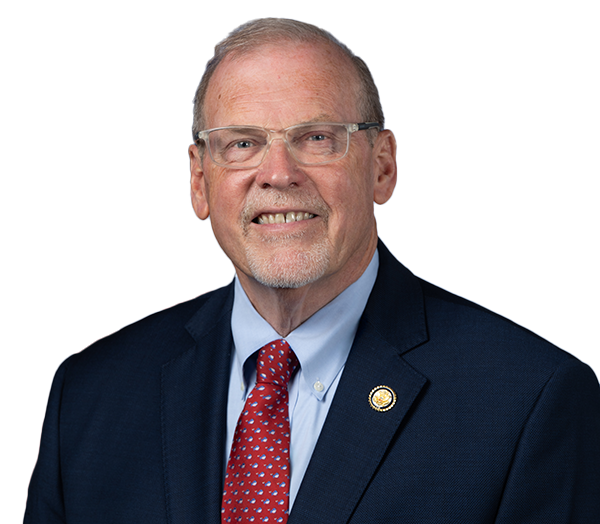Griffith Calls Hearing on Broadband Deployment
Wednesday,
May 10, 2023
|
Mollie Timmons
(202-225-3861)
U.S. Congressman Morgan Griffith (R-VA), Chairman of the House Energy and Commerce Subcommittee on Oversight and Investigations, called a hearing, held earlier today, to examine federal efforts to deploy broadband internet to un-served and underserved communities around the country. “I called today’s hearing on the important issue of broadband to find out why the federal government is spending billions of dollars to deploy broadband across our country, and yet, many Americans are still without internet service,” said Griffith. “It is clear that our federal efforts are currently fragmented and overlapping, slowing efforts to expand access. We must streamline these efforts to get Americans the access they need and deserve.” During the hearing, Griffith touched on the fact that many rural areas, like parts of his district, are without any broadband. This means they aren’t just underserved, but completely un-served. He argued that these areas should be the federal government’s priority in deploying broadband throughout the country. He also spoke to witnesses about the potential of using modern satellite services for areas that are too difficult or too expensive to lay fiber cable and the need to streamline our federal efforts for deploying broadband. Witnesses testifying at today’s hearing included Andrew Von Ah, Director, Physical Infrastructure, Government Accountability Office; Dr. George Ford, PhD, Chief Economist, Phoenix Center for Advanced Legal & Economic Public Policy Studies, and; Angela Siefer, Executive Director, National Digital Inclusion Alliance Griffith’s opening statement can be found here or below. To view his questioning of witnesses, click here and here.
Opening Remarks as Prepared for Delivery: I welcome our invited experts and guests to a hearing on a subject that is very important to the constituents in my district – that is access to broadband. For many Americans broadband has become second-nature, from sending emails, doing work, doing homework, watching our favorite shows, or ordering packages, people count on speedy and reliable broadband to connect with each other, foster new economic opportunities, and engage with the wider world. The need for broadband access was prominently revealed during the Coronavirus pandemic when even more activities moved online. Unfortunately, large sections of rural America, including much of my District, lack reliable access to broadband, putting many Americans at a disadvantage. The lack of broadband access in rural communities, or the digital divide, has been lessened. Billions of dollars spent by numerous federal agencies, and yet millions of Americans still lack access. When it comes to broadband access, a considerable number of people aren’t under-served – they are still un-served. According to Government Accountability Office, or GAO, at least 17 percent of rural Americans lack access to fixed broadband. Defined as a minimum download speed of 25 Mega Bits Per Second and 3 Megabits Per Second upload speed. Only about 1 percent of Americans in urban areas can’t access these speeds. That is a population of un-served people, and this is a separate issue from the question of affordability in those areas. If you are un-served, it doesn’t matter how much money you may have, you cannot practically gain access. The digital divide is certainly not a new problem. Federal government funding appropriated to help solve the problem hasn’t been lacking. The federal government has been funding efforts to close the digital divide for decades and has spent billions of dollars, the problem has not improved as quickly or completely as was expected. And millions of Americans still lack access. Most recently, the Infrastructure Investment and Jobs Act of 2021 allocated nearly $48 billion to support broadband deployment in un-served and underserved areas:
And as I noted before the bill passed, no preference was given to UN-served areas over UNDER-served areas. The National Telecommunications and Information Administration, known as NTIA, housed inside the Department of Commerce, is in charge of administering the majority of these funds. Prior to these programs, from 2015 to 2020 the Federal Government invested about $44 billion to increase Americans’ access to broadband and yet millions of Americans still lack access. Unfortunately, but not surprisingly, a recent GAO report, highlighted how federal efforts to expand access to broadband have been riddled with the classic problems we see with government run programs:
And to make it worse, according to the GAO report from last May, the United States broadband efforts are not guided by a national strategy with clear roles, goals, objectives and performance measures. Also troubling, is that, according to the GAO, the administration has not decided if a national strategy is needed. I would submit that a national strategy is necessary, and strong leadership to coordinate all of these agencies’ spending on broadband access is needed. GAO has identified the Federal Communications Commission and the NTIA as having significant roles in expanding broadband access and I look forward to this Committee conducting additional oversight of those federal agencies and their spending on broadband. Today, however, I am curious to hear from our witnesses about the various challenges currently facing the government agencies tasked with expanding Americans’ access to broadband and I look forward to their testimony. And hopefully soon, millions of Americans who don’t have broadband, will gain access. ### |
Stay Connected
Use the form below to sign up for my newsletter and get the latest news and updates directly to your inbox.


